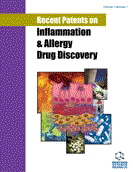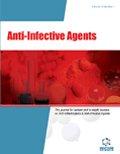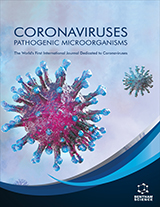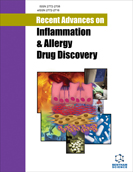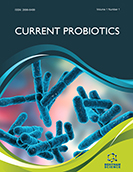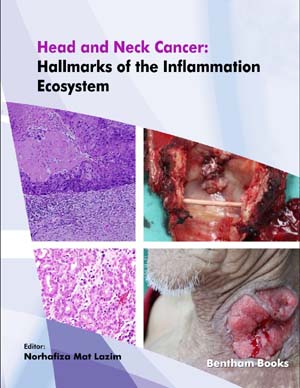Abstract
The frequency of allergic diseases has increased in recent decades. Asthma is one of the most prevalent conditions and a leading cause of morbidity. It affects 3-4% of the population in our geographical setting and extrinsic allergens are detected as the diseases etiological agent in around half of these cases. IgE is one of the molecules involved in the allergic process. Most of the time and resources at asthma units are devoted to corticosteroid-dependent patients. International guidelines for asthma treatment recommend a stepwise therapeutic approach; in the last step, the use of oral corticosteroids is advised when control is not achieved with long-acting ß-2-agonists and high doses of inhaled corticosteroids. No alternatives or complements to oral corticosteroids had been proposed until November 2006, when the latest GINA update included the IgE blocker omalizumab in the last step of asthma treatment. In this paper we discuss the pathogenesis of the allergic reaction and the key importance of IgE in this process in order to highlight the beneficial effects of a drug able to block the circulation of the free form of this immunoglobulin. We also review the most important studies and patents for the efficacy and effectiveness of the drug in the treatment of adults and pediatric patients with asthma and other diseases.
Keywords: Allergy, anti-IgE, sensitization, omalizumab, dosing strategy, side-effects, clinical experience, adults, pediatrics
Recent Patents on Inflammation & Allergy Drug Discovery
Title: The Relevance of IgE in the Pathogenesis of Allergy: The Effect of an Anti-IgE Drug in Asthma and Other Diseases
Volume: 1 Issue: 2
Author(s): Christian Domingo, Adalberto Pacheco, Miguel Hinojosa and Montserrat Bosque
Affiliation:
Keywords: Allergy, anti-IgE, sensitization, omalizumab, dosing strategy, side-effects, clinical experience, adults, pediatrics
Abstract: The frequency of allergic diseases has increased in recent decades. Asthma is one of the most prevalent conditions and a leading cause of morbidity. It affects 3-4% of the population in our geographical setting and extrinsic allergens are detected as the diseases etiological agent in around half of these cases. IgE is one of the molecules involved in the allergic process. Most of the time and resources at asthma units are devoted to corticosteroid-dependent patients. International guidelines for asthma treatment recommend a stepwise therapeutic approach; in the last step, the use of oral corticosteroids is advised when control is not achieved with long-acting ß-2-agonists and high doses of inhaled corticosteroids. No alternatives or complements to oral corticosteroids had been proposed until November 2006, when the latest GINA update included the IgE blocker omalizumab in the last step of asthma treatment. In this paper we discuss the pathogenesis of the allergic reaction and the key importance of IgE in this process in order to highlight the beneficial effects of a drug able to block the circulation of the free form of this immunoglobulin. We also review the most important studies and patents for the efficacy and effectiveness of the drug in the treatment of adults and pediatric patients with asthma and other diseases.
Export Options
About this article
Cite this article as:
Christian Domingo , Adalberto Pacheco , Miguel Hinojosa and Montserrat Bosque , The Relevance of IgE in the Pathogenesis of Allergy: The Effect of an Anti-IgE Drug in Asthma and Other Diseases, Recent Patents on Inflammation & Allergy Drug Discovery 2007; 1 (2) . https://dx.doi.org/10.2174/187221307780979865
| DOI https://dx.doi.org/10.2174/187221307780979865 |
Print ISSN 1872-213X |
| Publisher Name Bentham Science Publisher |
Online ISSN 2212-2710 |
 5
5Related Articles
-
Pulmonary Rehabilitation as Evaluated by Clinical Trials: An Overview
Reviews on Recent Clinical Trials Polypharmacology of <i>Aconitum</i> and <i>Delphinium</i> sp. Diterpene Alka loids: Antiarrhythmic, Analgesic and Anti-Inflammatory Effects
Mini-Reviews in Organic Chemistry An Update on Natural Occurrence and Biological Activity of Chromones
Current Medicinal Chemistry Localised Delivery of Therapeutic Agents to CNS Malignancies: Old and New Approaches
Current Pharmaceutical Biotechnology HDAC Inhibitors-New Generation of Target Specific Treatment
Mini-Reviews in Medicinal Chemistry From the Table to the Bedside: Can Food-Derived Sulforaphane be used as a Novel Agent to Treat Leukemia?
Current Cancer Drug Targets Dietary Interventions for Atopic Disorders
Current Pharmaceutical Design Sulfated Oligosaccharides: New Targets for Drug Development?
Current Medicinal Chemistry Computational Approach to the Discovery of Phytochemical Molecules with Therapeutic Potential Targets to the PKCZ protein
Letters in Drug Design & Discovery Cytokine Antibody Arrays in Biomarker Discovery and Validation
Current Proteomics Applicability and Approaches of (Meth) Acrylate Copolymers (Eudragits) in Novel Drug Delivery Systems
Current Drug Therapy Peripheral TRPV1 Receptors As Targets for Drug Development: New Molecules and Mechanisms
Current Pharmaceutical Design Targeted Multimodal Liposomes for Nano-delivery and Imaging: An Avenger for Drug Resistance and Cancer
Current Gene Therapy Biosynthesis and Biological Activities of In Vitro Derived Solasodine Glycoalkaloids from <i>Solanum laciniatum</i>
The Natural Products Journal Neutrophil Derived Microvesicles: Emerging Role of a Key Mediator to the Immune Response
Endocrine, Metabolic & Immune Disorders - Drug Targets Multifunctional Lipoic Acid Conjugates
Current Medicinal Chemistry Preoperative Pulmonary Assessment: A Review
Current Respiratory Medicine Reviews Subject Index To Volume-3
Letters in Drug Design & Discovery Antitumor Effects of Celastrol and Semi-Synthetic Derivatives
Mini-Reviews in Organic Chemistry Himalayan Plants as a Source of Anti-Cancer Agents: A Review
The Natural Products Journal


